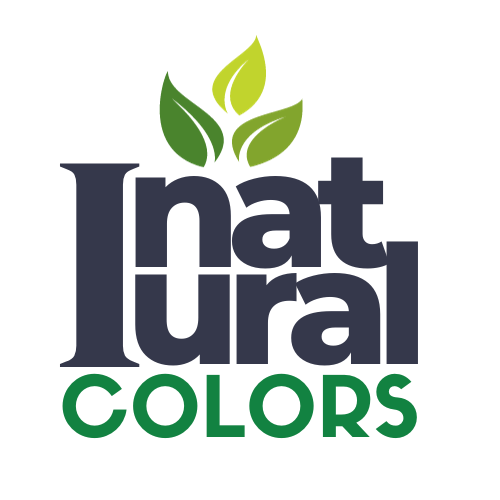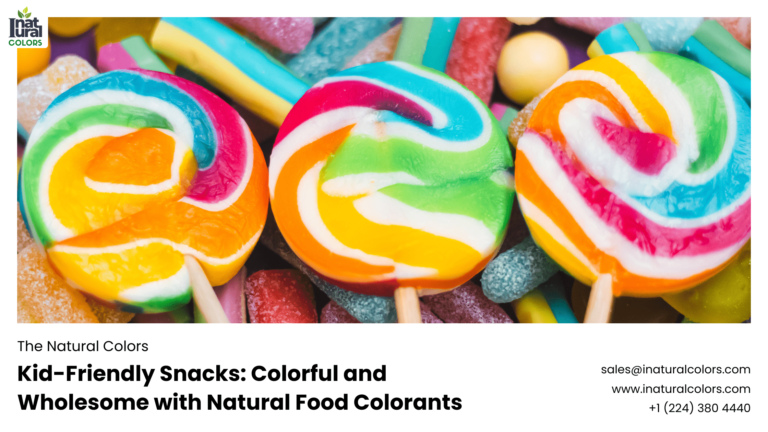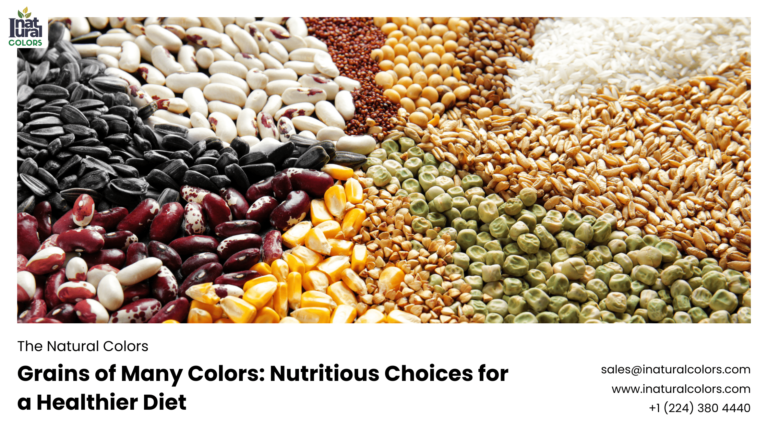Beautiful Plants For Your Interior

Introduction
Imagine biting into a juicy, red strawberry or savoring the vibrant orange of a freshly peeled carrot. Colors in food do more than just appeal to our senses; they influence our perception, appetite, and even our overall health. Natural colors, derived from plants, fruits, vegetables, and other natural sources, have become increasingly important in the food industry. This story delves into the significance of natural colors in food, exploring their benefits, industry trends, and the science behind their growing popularity.
The Role of Color in Food Perception
Color plays a crucial role in how we perceive and enjoy food. The visual appeal of food can significantly impact our eating experience, influencing our taste expectations and overall enjoyment. For instance, a study published in the journal Appetite found that participants rated drinks with more intense colors as having stronger flavors, even when the flavor concentration was the same. This highlights the powerful psychological effect of color on our food preferences.
Why Natural Colors?
Health Benefits
Natural colors are derived from sources such as fruits, vegetables, and spices. Unlike synthetic dyes, which have been associated with potential health risks, natural colors often come with added nutritional benefits. For example, the red color in tomatoes comes from lycopene, a powerful antioxidant linked to reduced risk of certain cancers. Similarly, the vibrant orange in carrots is due to beta-carotene, which is converted to vitamin A in the body and is essential for good vision and immune function.
Consumer Demand
Today’s consumers are more health-conscious and environmentally aware than ever before. A 2021 survey by Innova Market Insights found that 85% of consumers globally prefer natural ingredients, and many are willing to pay a premium for products that use natural colorants. This shift towards natural and clean-label products is driving the food industry to adopt natural colors more widely.
Industry Statistics and Trends
The market for natural food colors is booming. According to a report by Grand View Research, the global natural food colorants market size was valued at USD 1.6 billion in 2020 and is expected to grow at a compound annual growth rate (CAGR) of 8.4% from 2021 to 2028. This growth is driven by the increasing demand for clean-label products, health awareness, and stringent regulations on synthetic colorants.
The Science Behind Natural Colors
Natural colors are derived from various sources, each with its unique composition and benefits:
- Carotenoids: Found in carrots, pumpkins, and tomatoes, these pigments provide yellow, orange, and red hues and have antioxidant properties.
- Anthocyanins: Present in berries, grapes, and red cabbage, these pigments offer a range of colors from red to blue and are known for their anti-inflammatory and antioxidant effects.
- Betalains: Sourced from beets and Swiss chard, these pigments give red and yellow colors and have detoxifying and anti-inflammatory properties.
- Chlorophylls: The green pigment in leafy vegetables like spinach and kale, chlorophyll is known for its detoxifying and health-boosting properties.
- Curcuminoids: Extracted from turmeric, these pigments provide a bright yellow color and have powerful anti-inflammatory and antioxidant effects.
Applications of Natural Colors in the Food Industry
Natural colors are used in a wide range of food products to enhance their visual appeal and nutritional value:
Beverages
Natural colors are widely used in the beverage industry to create appealing drinks that attract consumers. From fruit juices to energy drinks, vibrant natural colors can make beverages look more refreshing and delicious.
Confectionery
In the confectionery industry, natural colors are used to produce visually appealing candies, chocolates, and sweets. Bright, eye-catching colors can make products more attractive, especially to children.
Dairy Products
Natural colors can enhance the visual appeal of dairy products such as yogurts, ice creams, and cheeses. For instance, the use of natural strawberry extract in yogurt not only provides a beautiful pink color but also adds flavor and health benefits.
Bakery
In the bakery sector, natural colors are used to decorate cakes, pastries, and breads. They can create a wide range of hues that make baked goods look more enticing.
Processed Foods
Natural colors are also used in processed foods like snacks, sauces, and ready-to-eat meals to ensure consistency and appeal. They help in masking any color loss that occurs during processing and storage.
Challenges in Using Natural Colors
While natural colors offer numerous benefits, their use also presents some challenges:
- Stability: Natural colors can be less stable than synthetic dyes, and factors like pH, temperature, and light can affect their color intensity.
- Cost: Natural colorants can be more expensive to produce than synthetic ones, impacting the overall cost of the product.
- Variability: The color intensity of natural pigments can vary based on the source and processing methods, making it challenging to achieve consistent results.
Innovations and Solutions
The food industry is continually evolving to overcome the challenges associated with natural colors. Here are some innovations making a difference:
- Microencapsulation: This technology involves encasing natural pigments in a protective coating to enhance their stability and control their release. It is particularly useful for sensitive pigments like anthocyanins.
- Hybrid Colorants: Combining natural and synthetic colorants can offer a balance between stability, cost, and consumer appeal.
- Advanced Extraction Techniques: Using advanced methods like supercritical fluid extraction can improve the efficiency and yield of natural pigments, making them more cost-effective.
iNatural Colors: Leading the Way in Natural Color Solutions
At iNatural Colors, we are dedicated to providing the highest quality natural color solutions to meet the diverse needs of the food industry. Our products are sourced from the finest natural ingredients and undergo rigorous testing to ensure they meet the highest standards of safety and efficacy.
Quality and Safety
Our natural colorants are free from harmful chemicals and contaminants, ensuring they are safe for consumption. We adhere to strict quality control measures to guarantee the purity and consistency of our products.
Innovation
We invest in cutting-edge research and development to offer innovative color solutions. Our team of experts continually explores new extraction methods, stability-enhancing technologies, and sustainable sourcing practices to stay ahead in the industry.
Customer-Centric Approach
At iNatural Colors, we work closely with our clients to understand their unique requirements and provide tailored solutions that enhance their products’ visual appeal and marketability. Our commitment to customer satisfaction is reflected in our responsive service and support.
The Future of Natural Colors
The future of natural colors in the food industry looks promising. As consumers continue to demand healthier, cleaner, and more sustainable food options, the adoption of natural colorants is expected to rise. Innovations in extraction and stabilization technologies will further enhance the viability of natural colors, making them more accessible and cost-effective for manufacturers.
Conclusion
The journey of natural colors in food technology is a vibrant and dynamic one. From enhancing the visual appeal of food to offering health benefits and meeting consumer demand for clean-label products, natural colorants play a crucial role in the food industry. At iNatural Colors, we are proud to lead the way in providing high-quality natural color solutions that bring food to life. Join us in embracing the beauty and benefits of natural colors and discover how they can transform your products.



